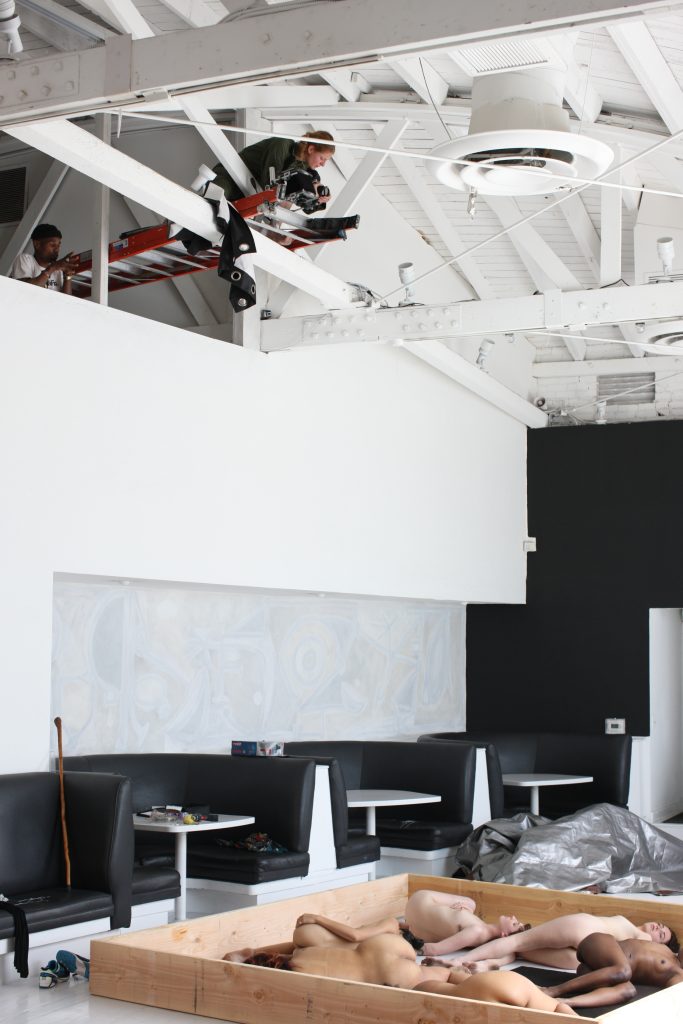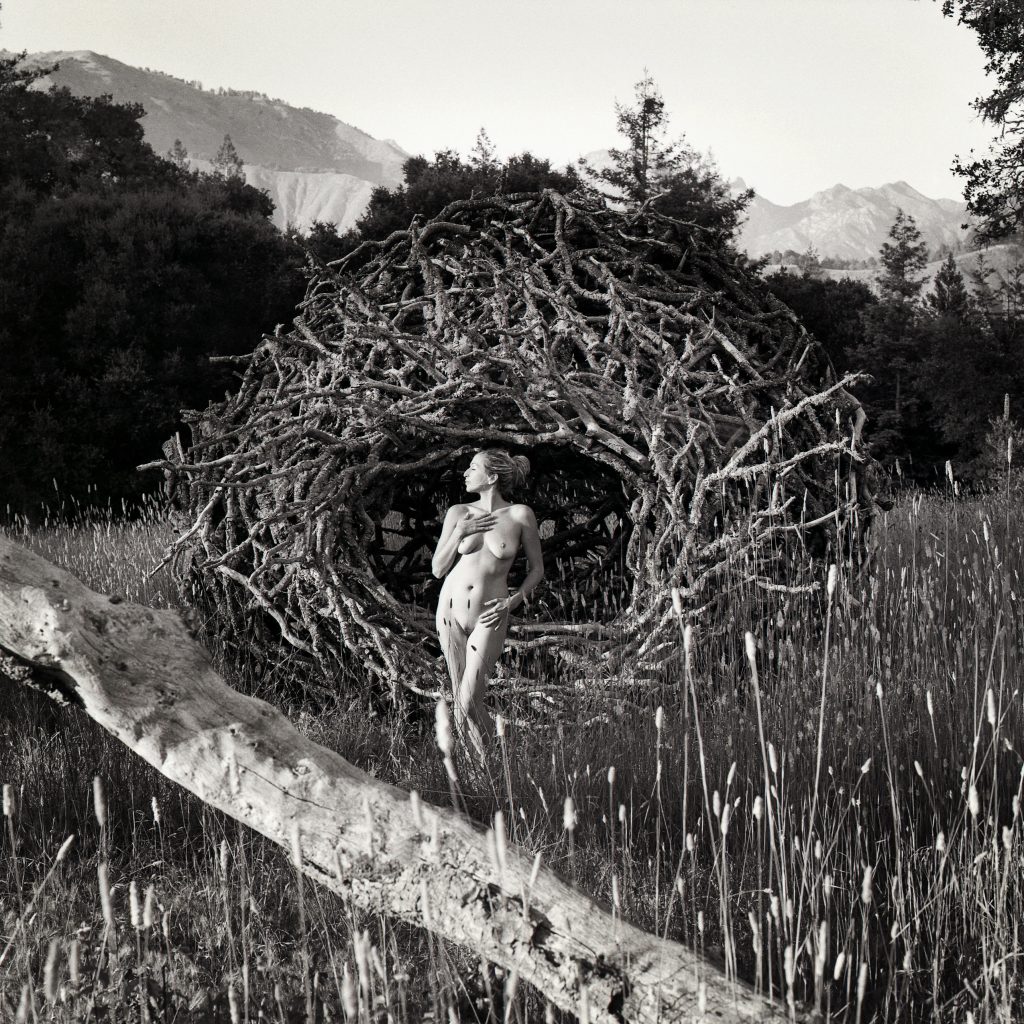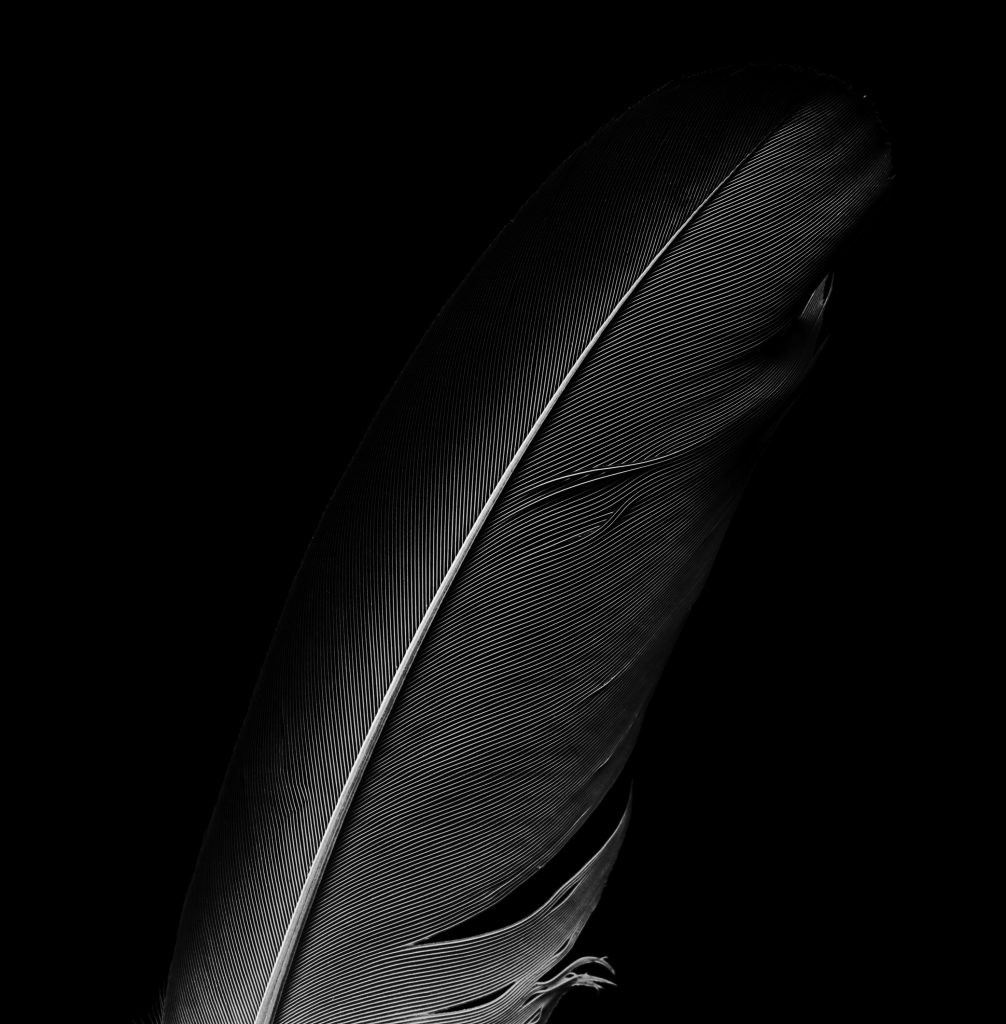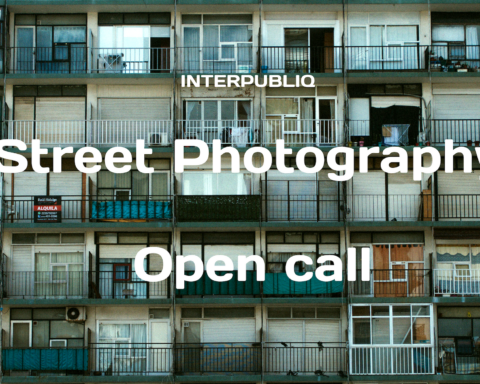Her work has evolved from celebrating the feminine form to embracing more inclusive representations of race and body beauty. She has received recognition from the International Photo Awards, the Hallmark Hall of Fame, and the Pen Women of America
Can you share your journey from studying Commercial Advertising at Brooks Institute to becoming a celebrated fine art photographer and activist, and how do you see your role evolving in the coming years?
Life just never turns out the way you expect, right? When I was at Brooks I saw myself being a celebrity photographer and doing commercial work for big fashion brands. While I studied, I had the chance to show my work to visiting celebrated photographers like Joyce Tenneson and Rodney Smith but after my dad got sick with cancer my priorities shifted. When I asked his oncologist what causes cancer they answered, “ your genetics and the environment “ – changing our genetics, even now, seems like fiction but our environment started to speak to me like a burning bush, or a burning forest fire in California or Australia. Our climate became my focus and my work shifted towards protecting the water, food and environment where I live in Monterey, California; from billboard campaign exhibitions at the GMO FREE Monterey County Film Festival in 2013 to fighting to Ban Fracking in our County and on a State level my work steered more towards protecting pollinators than creating imagery for marketing campaigns like I was trained but I always felt that was my purpose, to bring high level story telling to issues that matter most to me. I maintained a small client base and still managed to be a full time artist and photographer, fortunately the existing strong yet internationally respected West Coast School of fine art photography community in Carmel was here to support my fine art aspirations. My mentors, Ryuijie who has international representation and collected with the 21 century legends and Kim Weston whose name alone defines family of fine art photography. Their support gave me incredible opportunity to print and shoot with masterful technique.
Your photography has evolved from celebrating the feminine form to more inclusive representations of diversity and body beauty. What inspired this evolution, and how does it intersect with your activism?
Photographing women in nature as fine art muses was always a natural fit for me, it was a way of telling the story of my own experience feeling a sense of oneness with nature. Opening up to seeing the way that beauty has been co-opted to a small fraction of body types and realizing the dysmorphia that beauty standard has on a majority of all people really challenged me to study, explore and define the evolving definition of beauty for myself. To be honest this is an ideal that I really want more time to create in. I have to say with all the work the Magazine has been, I have not had the time to create in the way Ive been wanting to. Ive become that busy studio artist working too hard for clients and not making my own art anymore! Oh NO!! I better plan a shoot.
My Ophilia” holds significance as a self-portrait in the Steinbeck Museum’s permanent collection. Can you delve into the story behind this piece and its personal and artistic significance to you?
Ophelia is one of those mystical women in lore similar to that of Magdalene and an archetype for the feminine. The painting of her by Pre-Raphaelite painter Sir John Everett Millais is referred to by the Tate Modern as a painting of a Martyr or Saint. As a red head Ive always resonated with the pre-raphaelites and I do have to say, the work of being an activist and protecting nature seems like a form of martyrdom at times and floating in a pristine natural environment as ophelia is the ideal burial for a nature girl. My addition of the halo is also a fitting symbol for a do gooder. To be honest the image was slightly spontaneous and therefore an obvious act of my subconscious. Growing up Catholic, its very possible the ideals of service and generosity became a narrative to my character. Seeing myself as a mystical character is my version of being a princess.
Recently I watched a film centered on Ophelia’s perspective in the story of Hamlet and realized just how closely I relate to her and how many woman can relate to her. Born into poverty she learned to hone her craft and intellect to gain respect in the cort only to fall in love with a prince -Ophilia is left to fake her own death pictured in the famous illustration of herself floating in the lake to save his the life of her love in a matter of consequence. Who wouldn’t want to find that type of deep love!? Whats amazing to me now is that Ophelia used a very witchy form of herbal medicine and low dose toxins to fake her own death by slowing her heart rate, a trick that could have easily also been used by Jesus on the cross. I love the counter cultural perspective that strong women in history used a form of knowledge that was cast aside as a form of witchcraft by the church and used against women in positions of power to burn them as witches in order to colonize Europe. Ophelia and Mary Magdalene are women in history that point to the indignity and culture of our own pre-Christian ancestors.
As a board member of the Weston Collective and a founding member of the Juneteenth Coalition, you’ve been deeply involved in supporting young photographers and social justice initiatives. How do you balance your roles as an artist and activist in these endeavors?
Supporting my community comes naturally as we have all supported one other over the years. The Weston’s have always supported me, collaborating on workshops, introducing me to their collectors and letting me use their own darkroom and studio to print larger format silver gelatin prints. Being apart of their legacy to bring darkroom photography into local schools and support the next generation of photographers through the scholarship fund is an amazing project that I love to support. My buddy Maddox Haberdasher is also a big community player and when the George Floyd tragedy occurred during the pandemic we came together to produce a “Bohypsian ” podcast episode, ( my Magazine used to be called Bohypsian but I rebranded after the name’s origin as gypsie were pointed out as racist ) . The podcast with Maddox revealed some very very interesting knowledge around the history of my own Irish American’s family as slave owners and how we likely shared our surnames from that history. Maddox and I had been producing events for the community together for years by then and making something happen around racism was a natural fit and need for the times. On Juneteenth in 2020 we produced a “Funeral for Racism” in the heart of privilege, Carmel by the Sea. It was incredible to give the voices of black leadership on the Monterey Peninsula a stage during the pandemic. It got a lot of traction and we raised enough funds through donations to give back to the local chapter of the NAACP boys and girls club and started a foundation for black mentorship on the Monterey Peninsula. I am no longer working with Maddox on the Juneteenth Coalition but I am a proud founding member. With all matters of service you give as much as you can for as long as you can and theres always a time for the tide to shift and to let the next generation step up and take the lead. I see my role as an activist needing to shift back towards making art to make a difference and inspire change.
The transition from BOHYPSIAN to Magdalena Magazine seems significant. Could you discuss the motivations behind this rebranding and what readers can expect from the new publication?
Bohypsian was a name I created while in a very blissful lifestyle of yoga, meditation, good food practices and festival / travel life. I was very care free at the time. The name came about as a fusion of hippie and gypsie in the most innocent way. I was experiencing deep healing with the life I was living and recovering from deep anger and trauma of having my father and grandfather both pass within the same year as I graduated from Brooks into a recession. After a few years of rebellion and destructive behavior I retreating to Vipassena meditation halls in Europe which was on one hand practical to have a safe place to live for free but turned into a practice of self awakening. I decided I wanted to finally take my life seriously and try to get to work. This was about six years after graduating and feeling hopeless in the compounding debt of my student loans. When I moved back to California in 2012 I was reminded that I always wanted to make a Magazine, so I created Bohypsian as a brand and started collecting my stories and instigated a social media page. Seven years later I had a self published Magazine in print and a story on a canceled indigenous singer named Nahko Bear which brought some controversy. Nahko caught my attention with his music video shot at Standing Rock and I interviewed him while on his European tour on Thanksgiving in Munich. He introduced me to the Winnemem Wintu tribe and their “Run for Salmon” also featured in issue one, an indigenous led movement to protect the Sacramento River watershed and California’s once abundant Salmon Run. Even though meeting Nahko was instrumental to the features in issue one I was conflicted to publish his story after he was canceled for abusing his power with women in the indigenous community. I was starting to see how publishing was a great cross section for social politics as we are all imperfect. Which leads me to the change in the name. After issue 1 of Bohypsian I was called out on the gypsie term being a racial slander for the Romany people. I was unaware of this term bringing any people harm so I went back to the drawing board. Creating the publication alone means I do the work of 30 people so an issue takes more than a year. Issue 2 took 3 years and since its more of a limited edition artist book I had plenty of time to rebrand, and funny enough it took me a couple of years to realize it needed to be my own name, Magdalena.
Magdalena is still what it always has been, a mysterious feminine source for healing, connection, beauty and power. I love to imagine what Magdalena Magazine will bring in the future. Its really all still a mystery to me.
Living between Pacific Grove, California, and the Black Forest of Germany must offer diverse inspirations. How do these environments influence your artistic vision and thematic exploration?
The beauty of the central coast is truly a wold class inspiration and so much of my fine art work of women set in nature is inspired here in California. Its also a beautiful setting for most of my clients. Germany is a different animal. My family being there offers a refuge when I need to escape the expensive hustle of California. In Germany I can really slow down and return to myself. It also offers an international perspective that inspires my convictions around America’s lack of social services. I dont think I would be so critical of America if I did not have a perspective from living in Europe.
Your dual citizenship and cultural background are unique facets of your identity. How do they inform your artistic vision and the themes you explore in your photography?
Ive started to fake my German accent lately because it helps people understand my German side and its generally more funny and easier to command attention lol. I am way too much of a chameleon so most people don’t realize I am first generation American. Being ‘white” in this way is a form of cultural erasure in America that is not intentional but regardless it is a subject I am interested in covering in the next issue of Magdalena Magazine. Our cultural intelligence can bring so much to America’s need for evolution out of consumerism and into the mode of our ancestors who knew how to cook, how to save and how to be prepared for hard times. American’s live in a world of convenience which is addictive and we all know how hard it is to break bad habits, we need all the help we can get. My photography is sometimes therapeutic and beauty leads the motivation and other times its subjective and I am just trying to illustrate a point. That may be the other side of my brain working as a writer but photography and the latter are not my only only forms of expression. I also love to cook and am working on a cooking show series to help people connect to their local food movements.
Magdalena Magazine serves as a platform for grassroots movements and important causes. How do you select projects and organizations to support, and what impact do you hope these efforts will have?
I always follow my nose and pay attention to the subculture of America to cover broad themes of heart centered movements that are in some cases being regulated by the government. I remember getting feedback that my publication is like a feminine AdBusters and I really liked that. Women need to use their voice and men need to speak up for women too. The magazine is not exclusively about and for women, I want to be inclusive to opportunities for our readers to find more unity and less division. We need more of that in our world.
How does Magdalena Magazine incorporate the theme of interconnectedness with one another and nature into its content and messaging, and how do you ensure diverse voices are represented?
Ive covered the voices of our elders, our queer folk, indigenous communities and there is definitely a need for more voices of color. In many ways I do let nature lead the way, what are projects bringing hope and restoration to our lands and waters, who is doing this? How is our community being nourished by interconnectedness, what are those stories, how is healing getting to those who need it? These are all questions that have come naturally to the focus of my own activism and have made it to the magazine. I am always excited to find amazing voices of leaders in unexpected places, like the story of Richie Redesa who started a Toxic Masculinity self help group in a Soledad Prison ( an unpublished story ) or Shinkai Hakimi, the Afghan woman who helps organize a school for women in Afghanistan, now underground. I interviewed her on 9/11 just by happenstance, you just cant make these things up.
Looking ahead, what upcoming initiatives or features in Magdalena Magazine are you excited about, and how do you envision the magazine evolving in the future to continue its mission of empowerment and inspiration?
Im really excited to cover my pilgrimage to Mary Magdalene’s caves in the south of France this summer and rekindle some of my bohemian spirit. Im also very excited to connect with Alice Waters Edible Schoolyard garden project and opening a discussion about America’s “whiteness” blocking our connections with our own indignity. Mostly I am very clear I need to start making art again because I have been running myself ragged in California, being a full time photographer. Time to leave the country!!!






























